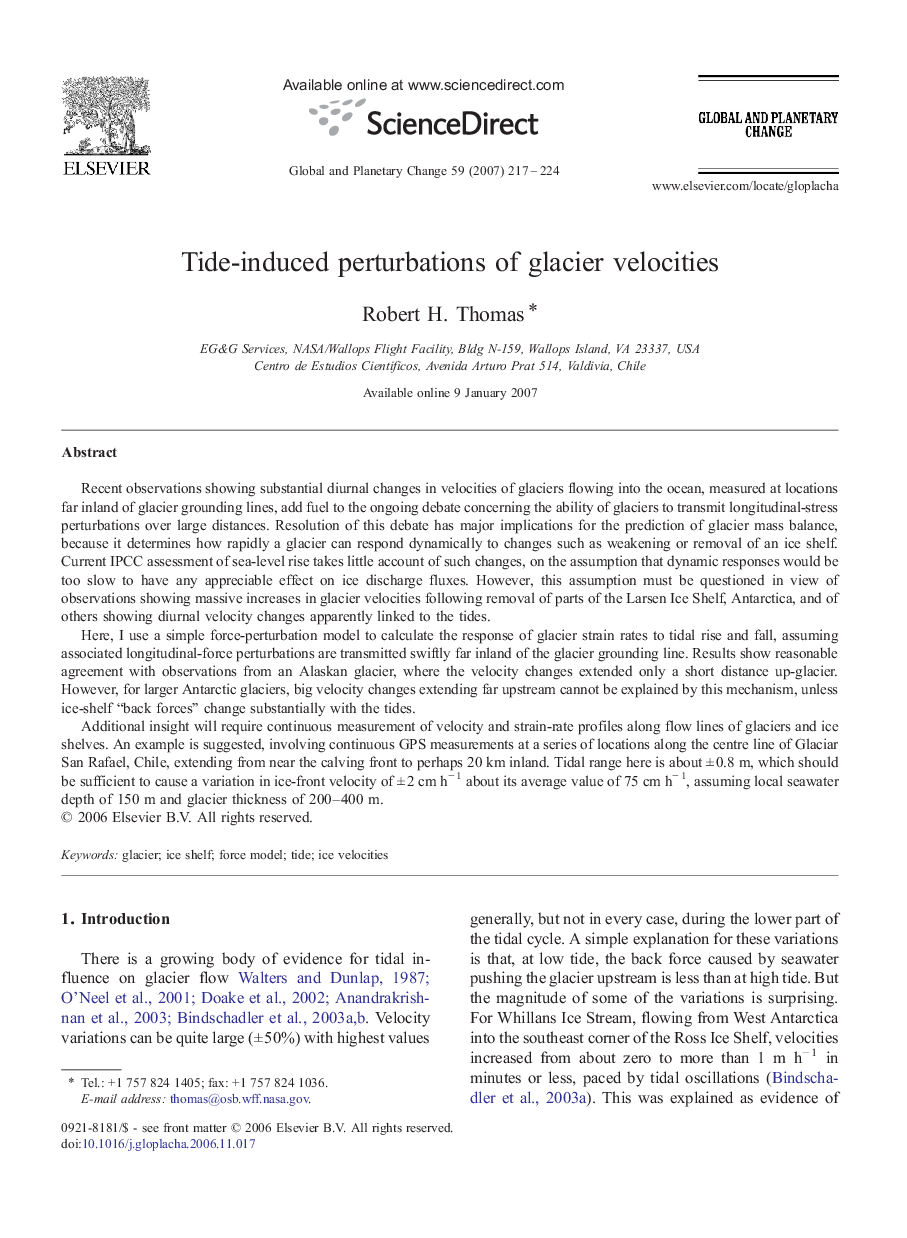| Article ID | Journal | Published Year | Pages | File Type |
|---|---|---|---|---|
| 4464332 | Global and Planetary Change | 2007 | 8 Pages |
Recent observations showing substantial diurnal changes in velocities of glaciers flowing into the ocean, measured at locations far inland of glacier grounding lines, add fuel to the ongoing debate concerning the ability of glaciers to transmit longitudinal-stress perturbations over large distances. Resolution of this debate has major implications for the prediction of glacier mass balance, because it determines how rapidly a glacier can respond dynamically to changes such as weakening or removal of an ice shelf. Current IPCC assessment of sea-level rise takes little account of such changes, on the assumption that dynamic responses would be too slow to have any appreciable effect on ice discharge fluxes. However, this assumption must be questioned in view of observations showing massive increases in glacier velocities following removal of parts of the Larsen Ice Shelf, Antarctica, and of others showing diurnal velocity changes apparently linked to the tides.Here, I use a simple force-perturbation model to calculate the response of glacier strain rates to tidal rise and fall, assuming associated longitudinal-force perturbations are transmitted swiftly far inland of the glacier grounding line. Results show reasonable agreement with observations from an Alaskan glacier, where the velocity changes extended only a short distance up-glacier. However, for larger Antarctic glaciers, big velocity changes extending far upstream cannot be explained by this mechanism, unless ice-shelf “back forces” change substantially with the tides.Additional insight will require continuous measurement of velocity and strain-rate profiles along flow lines of glaciers and ice shelves. An example is suggested, involving continuous GPS measurements at a series of locations along the centre line of Glaciar San Rafael, Chile, extending from near the calving front to perhaps 20 km inland. Tidal range here is about ± 0.8 m, which should be sufficient to cause a variation in ice-front velocity of ± 2 cm h− 1 about its average value of 75 cm h− 1, assuming local seawater depth of 150 m and glacier thickness of 200–400 m.
